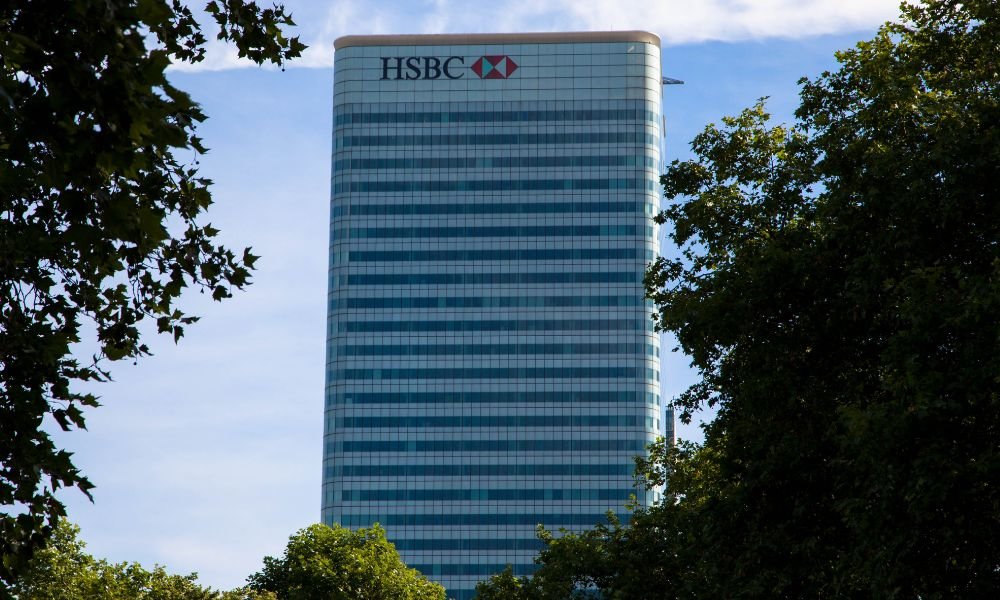HSBC investment bank restructuring has become one of the most closely watched shake-ups in global finance. The London-headquartered bank is shifting its focus from global reach to regional strength, especially in Asia. It’s reducing operations in the West, cutting costs, and slimming down its investment banking arm.
But can HSBC grow stronger by shrinking? That’s the big question analysts and investors are asking.
A Global Giant with Deep Asian Roots
Founded in 1865 in Hong Kong, HSBC was created to finance trade between Europe and Asia. For decades, the bank expanded its global footprint aggressively — from the UK to the US, from the Middle East to Latin America. By the early 2000s, it was one of the world’s largest financial institutions.

However, the 2008 global financial crisis and several missteps in the following years — including overexposure to certain risky markets — forced HSBC to rethink its future. While it never completely lost its global relevance, it struggled to keep up with faster, more focused competitors like JPMorgan and Goldman Sachs.
The New Strategy: Regional Focus and Leaner Operations
Under the leadership of CEO Noel Quinn, HSBC is now taking bold steps. The plan: make the investment bank smaller, but stronger, by focusing on regions and services where it can win.
This means:
- Closing down the mergers and acquisitions (M&A) and equity capital markets (ECM) teams in the UK, US, and some parts of Europe
- Focusing on financing deals and debt capital markets in Asia and the Middle East
- Trimming thousands of jobs and reducing management layers
- Exiting underperforming markets, especially in retail and commercial banking
- Reinforcing its presence in Hong Kong, Singapore, and the Gulf region
It’s a “back to basics” approach, but with a modern twist — the emphasis is on becoming a regional leader with global support, rather than trying to be a global player at all costs.
Why HSBC Is Betting Big on Asia
Asia accounts for a major portion of HSBC’s profits. In recent years, the bank has earned more than 60 percent of its income from the region. Markets like China, India, Singapore, and the UAE are growing faster than the West — and HSBC wants a bigger slice of that growth.
The demand for debt financing, infrastructure loans, and cross-border transactions in Asia and the Middle East is booming. HSBC believes that by focusing on these areas, it can unlock more value and create stronger client relationships.
Another reason for the pivot to Asia is the intense competition in investment banking in the US and Europe. In those markets, American giants like Morgan Stanley and Goldman Sachs dominate. HSBC, by contrast, has always been more regionally focused in Asia, and this new plan plays to that strength.
Job Cuts and Cost Savings: The Painful Part

The restructuring won’t be easy. HSBC plans to reduce thousands of jobs across its investment banking teams, especially in the US and UK. Senior bankers in M&A and ECM divisions are among the first to go. Dozens of senior roles have already been eliminated.
The bank expects to save around $1.5 billion annually through these moves. However, the restructuring costs are expected to reach about $1.8 billion over the next two years. These will go toward severance packages and operational changes.
This decision hasn’t been easy for employees, but bank executives insist it’s necessary for long-term survival and growth.
Can HSBC Succeed Where Others Have Failed?
Many banks have tried to restructure their investment divisions in the past — with mixed results. Some succeeded in becoming more profitable, but others lost market share and client trust.
HSBC’s strategy stands out because it’s not about doing more with less. It’s about doing less — but doing it better. That’s a significant mindset shift in global finance.
Instead of trying to match the likes of JPMorgan on every front, HSBC is saying: “We will focus on where we’re strongest.” Whether that works depends on how well it can execute this pivot, especially as it steps back from large Western markets.
Four Business Units for a Clearer Vision
To support the restructuring, HSBC has reorganized its operations into four major units:
- Hong Kong – Serving as a core regional headquarters
- The United Kingdom – Remaining an important retail and wealth market
- Corporate and Institutional Banking – Focused on high-value clients
- International Wealth and Personal Banking – Catering to wealthy individuals and global citizens
By simplifying its corporate structure, HSBC hopes to become faster, more efficient, and better aligned with its target markets.
Measuring Success: What Will Make or Break This Plan?
To judge whether HSBC’s investment bank restructuring is a success, investors and market analysts are watching several key indicators:
- Return on Tangible Equity (RoTE): A higher RoTE shows efficient use of capital. HSBC’s goal is to reach 12% or more.
- Growth in Asia-Pacific revenue: Any rise here proves the regional focus is paying off.
- Cost-to-income ratio: Lower ratios mean higher profitability.
- Client growth and retention in Asia and the Gulf: This shows how well HSBC is competing locally.
- Market share in debt capital markets: A key focus area under the new plan.
Investor Reaction: Mixed but Hopeful
The market response to HSBC’s plan has been cautiously positive. Investors like the cost savings and the renewed focus on Asia, where long-term growth prospects look strong.
However, there’s also concern. HSBC has changed direction multiple times over the past two decades. Some worry that if leadership changes or results don’t come quickly, the strategy may again shift. There’s also fear of losing relevance in Western markets, especially for global clients who need a full-service banking partner.
Still, analysts agree: the decision to focus on its strengths — rather than trying to do everything — could be a smart move.
Competitor Landscape: What HSBC Is Up Against

HSBC’s rivals aren’t standing still. American investment banks continue to expand in Asia, and regional players like DBS in Singapore and Emirates NBD in the UAE are growing rapidly. In China, domestic banks are backed by state policies to increase global influence.
To stay ahead, HSBC must not only restructure but also innovate. It needs better digital tools, faster client service, and more cross-border offerings tailored to Asia and the Middle East. Its legacy and reputation give it a head start — but speed and adaptability will be crucial.
A Look Ahead: Leaner, Smarter, Bolder?
The HSBC investment bank restructuring marks a turning point for the 159-year-old bank. Instead of global dominance, the focus is now on regional excellence. That’s a bold shift — one that matches the direction of the global economy, where Asia and the Gulf are becoming the new centers of gravity.
Success won’t be guaranteed. The strategy will face internal resistance, external competition, and global economic pressures. But if executed well, HSBC may set a new blueprint for modern investment banking: not the biggest, but the most focused and agile.
In a world where agility and specialization are often more valuable than scale, HSBC’s smaller investment bank could prove to be a much stronger one.
Do follow UAE Stories on Instagram
Read More: Dubai Summer Traffic Improvements Begin: RTA Launches Road Works At 40 Key Spots













